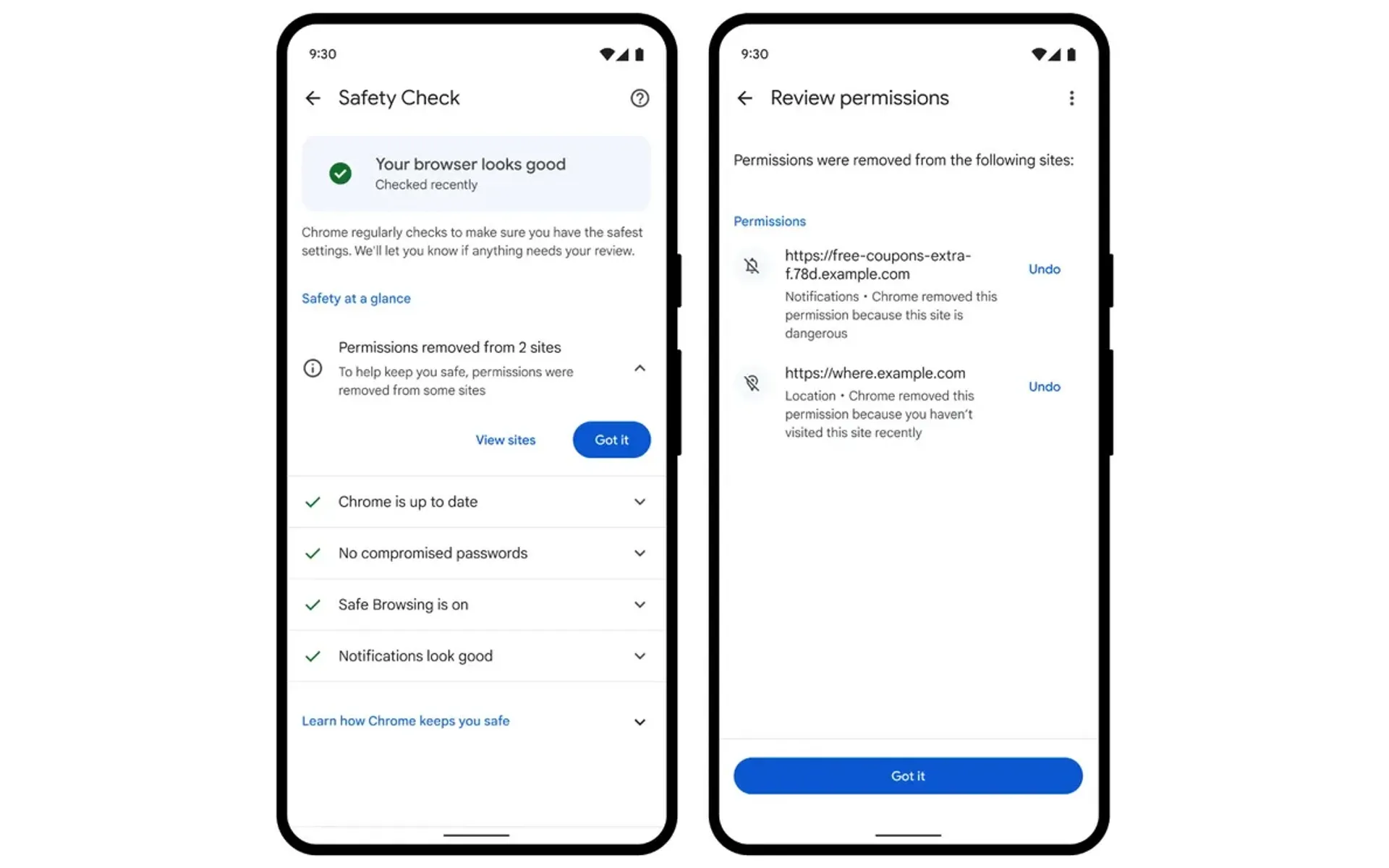Chrome bolsters security with upgraded safety check and permissions control
Google's Chrome browser introduces improved Safety Check, easier notification management, and one-time permissions for enhanced user security.

Google's latest Chrome update introduces enhanced safety features, offering users improved protection and control over their online experience. Released on September 12, 2024, these updates include an improved Safety Check, simplified notification management, and granular permission controls.
According to Andrew Kamau, Product Manager at Chrome, the new features are designed to better protect users from online threats and provide greater control over personal data. The update addresses key aspects of browser security, focusing on proactive measures and user empowerment.
Enhanced Safety Check: Proactive Protection
The revamped Safety Check feature now operates automatically in the background, taking a more proactive approach to user safety. This upgrade allows Chrome to perform several key functions:
- Automatically revoke permissions from infrequently visited sites
- Flag potentially unwanted notifications
- Alert users to security issues requiring attention
Safety Check also targets abusive notifications by automatically revoking permissions from sites identified as deceptive by Google Safe Browsing. On desktop platforms, the feature continues to scan for potentially risky Chrome extensions, providing users with a summary panel and quick controls for removal.
The core functionalities of Safety Check remain intact, including:
- Ensuring users have the latest security patches
- Checking passwords for potential security risks
- Offering options to enable Google Safe Browsing protections
Streamlined Notification Management
Chrome introduces a one-tap unsubscribe feature for site notifications, initially available on Pixel devices and soon expanding to other Android devices. Users can now tap an "Unsubscribe" button directly in the notifications drawer to stop receiving notifications from a specific site.
Data from Google indicates that this feature has already resulted in a 30% reduction in notification volume on supported Pixel devices. The company plans to extend this functionality across the broader Android ecosystem in the near future.
Granular Permission Controls
The update introduces one-time permissions for Chrome on Android and Desktop platforms, enhancing user control over data sharing. This feature allows users to grant select permissions, such as camera or microphone access, to a site for a single session only.
Key aspects of the one-time permissions feature include:
- Automatic revocation of permissions upon leaving the site
- Requirement for explicit permission granting for subsequent visits
- Application to sensitive permissions like camera and microphone access
Technical Implementation and Impact
The Safety Check feature utilizes Chrome's background processes to continuously monitor for potential security issues. It interfaces with Google Safe Browsing's database to identify and mitigate threats from deceptive sites and abusive notifications.
The one-tap unsubscribe feature leverages the Android notifications API, allowing Chrome to interact directly with the system's notification management. This implementation enables a seamless user experience without requiring navigation to individual website settings.
For one-time permissions, Chrome employs a temporary permission model. This model stores granted permissions in volatile memory, ensuring they are cleared when the browser session ends or the user navigates away from the site.
User Privacy Considerations
While these features aim to enhance user security, they also raise questions about data collection and privacy. Google states that the Safety Check feature operates locally on the user's device, minimizing data transmission to Google servers. However, the feature does rely on Google Safe Browsing's database, which involves some level of data exchange.
The notification management and one-time permissions features primarily operate on the user's device, with minimal data shared with Google's servers. This local-first approach aligns with growing user expectations for privacy and data control.
Industry Context and Competitive Landscape
Chrome's security updates come at a time when browser security is increasingly scrutinized. Other major browsers, including Mozilla Firefox and Microsoft Edge, have implemented similar features in recent months:
- Firefox introduced Enhanced Tracking Protection in 2019, which blocks known trackers by default
- Microsoft Edge launched its Password Monitor feature in 2020, alerting users to potentially compromised passwords
Chrome's latest updates position it competitively in the browser security landscape, addressing key user concerns about online safety and data privacy.
Key Facts
- Chrome released new safety features on September 12, 2024
- Updates include improved Safety Check, easier notification management, and one-time permissions
- Safety Check now runs automatically in the background, revoking unused permissions and flagging potential issues
- One-tap unsubscribe feature for notifications available on Pixel devices, coming soon to other Android devices
- One-time permissions allow users to grant temporary access to sensitive features like camera and microphone
- The notification management feature has reduced notification volume by 30% on supported Pixel devices
- These features primarily operate locally on the user's device, minimizing data shared with Google servers
- The updates position Chrome competitively in the browser security landscape

